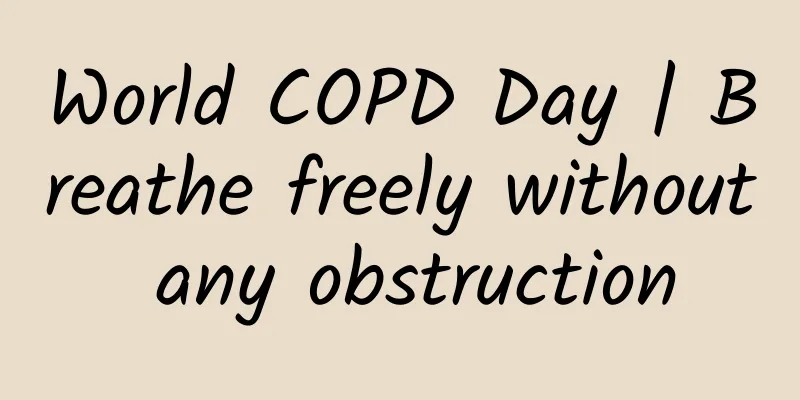Papaya breast enlargement, massage to make breast bigger... These breast enlargement tips are not reliable

|
This article was reviewed by Yu Qi, chief physician at Peking Union Medical College Hospital, Chinese Academy of Medical Sciences The topic of breast enhancement has always attracted much attention from women. Many people pursue round and full breasts, so they try every possible way to enlarge their breasts. There are many folk tips for breast enhancement, such as eating more papaya to enlarge breasts and massaging breasts more often, but are these methods really effective? (Copyright image, no permission to reprint) 01 The breast enhancement tips we often hear are not reliable In fact, most of these tips have no scientific basis and are not reliable. Unreliable trick 1: Papaya can enlarge breasts Many people believe that eating more papaya can make breasts bigger, because papaya contains papain, which can stimulate breast growth. In addition, the carotenoids contained in papaya can be converted into vitamin A, which can stimulate the secretion of estrogen, all of which can make breasts bigger. This statement has no scientific basis and is more like Lao Wang selling papayas and bragging about himself. When we eat papaya, the papain contained in it is broken down in the stomach and cannot stimulate breast growth. Vitamin A cannot stimulate estrogen secretion and is also ineffective for breast enhancement. Unreliable trick 2: Massage can make your breasts bigger Massage is one of the treatment methods in traditional Chinese medicine. It can help people relieve fatigue, relax muscles and activate blood circulation, and is very effective in treating joint sprains, muscle strains, neuralgia and other diseases. It is said online that massage can also help enlarge breasts, and various massage techniques are provided. But in fact, there is currently no scientific evidence to prove that massage can make breasts larger and firmer. Unreliable trick three: Eating more pig's trotters can make your breasts bigger Studies have shown that breasts are composed of about 90% fat, and it is this fat that makes the breasts elastic and maintains their fullness. Many people believe that eating foods rich in fat, protein, and collagen can achieve the purpose of breast enhancement. Therefore, foods such as pig's feet, chicken skin, white fungus, almonds, and kelp are favored by many women. In fact, for girls who are in puberty, eating more foods rich in fat, protein and collagen can make their breasts fuller. For adult women, the effect of changing breast size through diet is minimal. The reason is that adult women's breasts have already matured, and the breasts can only become larger when the fat in the body is stored to a sufficient amount. This is why fatter women generally have fuller breasts. 02 Breast size is related to genetics and environment All human traits are determined by genetic genes. For women, the size and shape of their breasts are determined by genes at birth. Generally speaking, if the mother has full breasts, her daughter will also have fuller breasts. However, the genetics of breast development is only part of the factor that affects breast size. Breast size is also closely related to the environment in which women grow up. Girls who eat a nutritious diet tend to have fuller and rounder breasts than girls who are malnourished. Especially during adolescence, many girls diet to improve their figure, which leads to malnutrition. Due to insufficient fat intake, this further leads to poor breast development[1]. We usually see that adolescent girls with a fuller figure tend to have fuller breasts, while girls with a thin figure tend to have much smaller breasts. 03 Hormones are crucial in breast development The breast is mainly composed of the nipple, mammary gland tissue, subcutaneous fat tissue that wraps the gland, connective tissue and suspended suspensory ligaments. Starting from puberty, due to the increase in gonadotropin-releasing hormone secreted by the hypothalamus, the hypothalamic-pituitary-ovarian axis is activated, and the pituitary gland secretes a large amount of follicle-stimulating hormone and luteinizing hormone, which increases the secretion of ovarian steroid hormones. Under the combined action of estrogen, progesterone, prolactin and androgen secreted by the adrenal cortex, the mammary gland begins to develop, the breast gradually bulges, and the nipple and areola also gradually increase in size and darken in color. Usually, female sexual development begins with breast development, and 2 to 3 years later, menarche occurs. After menarche, most girls' breasts continue to develop, and it takes about 5 years for them to mature gradually. After adulthood, women’s breasts do not remain static. The physiological state of the breast is affected by hormones such as estrogen, progesterone, and prolactin, and changes cyclically with the menstrual cycle[2]. After pregnancy, breasts will change under the influence of progesterone. It is not surprising that women's breasts become larger in the early stages of pregnancy. In the middle and late stages of pregnancy, breasts have the function of lactation and may secrete milk. At this time, breasts will be firmer and fuller than before pregnancy. As estrogen and progesterone levels decrease in menopausal and elderly women, fat tissue and breast tissue begin to shrink, so the breasts also shrink, become smaller and sag. In short, if you want firm and round breasts, eating papaya will not work, but for adult women, there are ways to enlarge their breasts. Compared with breast enlargement through plastic surgery, we recommend exercising to achieve breast enlargement. Because women's breasts also need muscles to support them. Studies have shown that exercising chest muscles and improving breast support can effectively enhance chest muscle strength, such as chest expansion exercises and push-ups, making the breasts and surrounding muscle tissue stronger, making the breasts look firmer and fuller. At the same time, scientific physical exercise can make women healthier and more beautiful. Author: Hao Yanfang, Chinese Academy of Medical Sciences, Peking Union Medical College Hospital Reviewer: Yu Qi, Chief Physician, Peking Union Medical College Hospital, Chinese Academy of Medical Sciences References [1] Christie Fink. Breast Health Handbook: A Complete Guide to Cancer Prevention from the American Medical College. Translated by Ma Fei, Ma Nan, and Yong Yin. Beijing: CITIC Press, 2019. [2] Zheng Puze. Dr. Rui’s Women’s Health Series: Ovaries, Breasts, and Uterus. Hunan: Hunan Science and Technology Press, 2019. Source: Science Popularization China |
<<: Using 1 gram of lunar soil to find the "secret" of helium-3 extraction
Recommend
Lao Wang from the west of the village: A training camp to teach you how to make lessons (completed) worth 799 yuan
The course is divided into 5 chapters (the underl...
The ups and downs of the stock market: all caused by WeChat groups and Moments
This new bull market in A-shares started from 2,0...
It is enough for Toutiao information flow delivery and strategy optimization
Placement From June to November 2016, the consump...
2021, the first year of traffic marketing collapse
2021 is about to end, and someone said, Yang Yang...
Are the bandwidth rental charges for Shanghai IDC data center high?
Are the bandwidth rental charges for Shanghai IDC...
Five-minute technical talk | Solution for implementing APP intelligent voice interaction based on Speech framework
Part 01 Overview The system's speech framewor...
A collection of common advertising knowledge and terminology
In the previous action guide for Amazon sellers t...
Can eating rice cause allergies? Do you know these strange allergens?
recently Artist Guo Biting revealed her troubles ...
"91 Ten Articles" - A daily must-read briefing for the new energy vehicle industry (210304)
1. Following Huawei, traditional communications g...
How to build the strongest user activation system?
Today I would like to share with you my understan...
9 cases and 12 methods to obtain seed users
Regarding seed users , there are several concepts...
How many cores does your car have? Mine is an Nvidia 8-core!
Chip manufacturer Nvidia has a long history with ...
Google: 2020 Smart Digital City Report - Citywide AI (136 pages)
Google Hong Kong today released the first edition...
6 major concepts to help you keep a normal mind and walk the road of operation
The Internet+ wave is rolling, attracting all use...
Discussing activity operations from the perspective of user retention and activity
Today’s sharing will talk to you about event oper...









